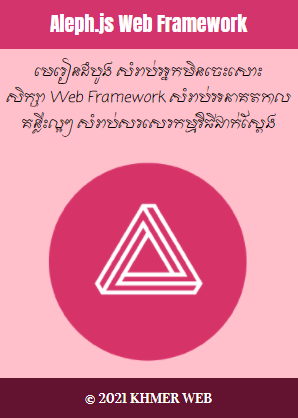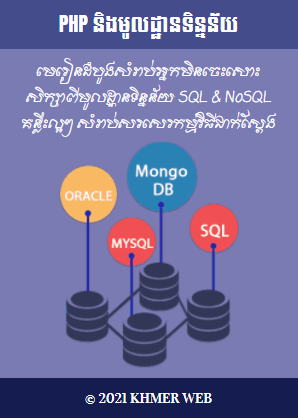To deploy Django app to Heroku, we have to follow a few steps. The first step is to install gunicorn module in our virtual environment. The function of this module would be detailed later when we talk about necessary files required by Heroku platform. And to install gunicorn module, we have to write statement as below:
myvenv\Scripts\activate pip install gunicorn
The next step is to define a folder to store static files such as CSS, JavaScript, Font, Images in setting.py module by using path property in "os" module in Python standard library.
"""
Django settings for mysite project.
Generated by 'django-admin startproject' using Django 3.1.2.
For more information on this file, see
https://docs.djangoproject.com/en/3.1/topics/settings/
For the full list of settings and their values, see
https://docs.djangoproject.com/en/3.1/ref/settings/
"""
import os
from pathlib import Path
# Build paths inside the project like this: BASE_DIR / 'subdir'.
BASE_DIR = Path(__file__).resolve().parent.parent
# Quick-start development settings - unsuitable for production
# See https://docs.djangoproject.com/en/3.1/howto/deployment/checklist/
# SECURITY WARNING: keep the secret key used in production secret!
SECRET_KEY = 'h4!#au%8tb_9@oe+c0te=g=u%cfxb8t8fy%7+(gx2+51!t*b+s'
# SECURITY WARNING: don't run with debug turned on in production!
DEBUG = True
ALLOWED_HOSTS = ['*']
# Application definition
INSTALLED_APPS = [
'django.contrib.admin',
'django.contrib.auth',
'django.contrib.contenttypes',
'django.contrib.sessions',
'django.contrib.messages',
'django.contrib.staticfiles',
]
MIDDLEWARE = [
'django.middleware.security.SecurityMiddleware',
'django.contrib.sessions.middleware.SessionMiddleware',
'django.middleware.common.CommonMiddleware',
'django.middleware.csrf.CsrfViewMiddleware',
'django.contrib.auth.middleware.AuthenticationMiddleware',
'django.contrib.messages.middleware.MessageMiddleware',
'django.middleware.clickjacking.XFrameOptionsMiddleware',
]
ROOT_URLCONF = 'mysite.urls'
TEMPLATES = [
{
'BACKEND': 'django.template.backends.django.DjangoTemplates',
'DIRS': [],
'APP_DIRS': True,
'OPTIONS': {
'context_processors': [
'django.template.context_processors.debug',
'django.template.context_processors.request',
'django.contrib.auth.context_processors.auth',
'django.contrib.messages.context_processors.messages',
],
},
},
]
WSGI_APPLICATION = 'mysite.wsgi.application'
# Database
# https://docs.djangoproject.com/en/3.1/ref/settings/#databases
DATABASES = {
'default': {
'ENGINE': 'django.db.backends.sqlite3',
'NAME': BASE_DIR / 'db.sqlite3',
}
}
# Password validation
# https://docs.djangoproject.com/en/3.1/ref/settings/#auth-password-validators
AUTH_PASSWORD_VALIDATORS = [
{
'NAME': 'django.contrib.auth.password_validation.UserAttributeSimilarityValidator',
},
{
'NAME': 'django.contrib.auth.password_validation.MinimumLengthValidator',
},
{
'NAME': 'django.contrib.auth.password_validation.CommonPasswordValidator',
},
{
'NAME': 'django.contrib.auth.password_validation.NumericPasswordValidator',
},
]
# Internationalization
# https://docs.djangoproject.com/en/3.1/topics/i18n/
LANGUAGE_CODE = 'en-us'
TIME_ZONE = 'Asia/Phnom_Penh'
USE_I18N = True
USE_L10N = True
USE_TZ = True
# Static files (CSS, JavaScript, Images)
# https://docs.djangoproject.com/en/3.1/howto/static-files/
STATIC_URL = '/static/'
STATIC_ROOT = os.path.join(BASE_DIR, 'static')
To deploy Django application as well as Python application in general, we need to create three files - Procfile, requirements.txt, and runtime.txt.
web: gunicorn mysite.wsgi --log-file -
In the Procfile, it is the information needed by Heroku platform to use gunicorn instead of runserver to run the code in Django app main file such as mysite.wsgi for example in view to launch the app on Heroku platform.
Next, we have to create another file called "requirements.txt" by writing statement on the prompt window as below:
myvenv\Scripts\activate pip freeze > requirements.txt
The statement above creates a requirements.txt file in which a number of instructions telling Heroku platform to install necessary modules with its precise version for our Django app to be able to run on that platform.
asgiref==3.2.10 Django==3.1.2 gunicorn==20.0.4 pytz==2020.1 sqlparse==0.4.1
Lastly, we need to tell Heroku platform to use the precise Python interpreter version to run our Django app. For that, we need to create a runtime.txt file in which we have to write down the required Python version.
python-3.8.5
After having the necessary files, we should first push our Django app to a new repository on GitHub, and link it to a new app on Heroku platform to deploy it over there.
GitHub: https://github.com/Sokhavuth/django
Heroku: https://khmerweb-django.herokuapp.com/























